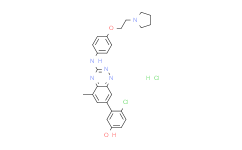
购物车0
产品总数:61440


| 商品编号 | 规格 | 价格 | 会员价 | 是否有货 | 数量 |
|---|---|---|---|---|---|
| PL01301-1mg | 1mg | ¥1768.00 | 请登录 |
|
|
| PL01301-5mg | 5mg | ¥3536.00 | 请登录 |
|
|
| PL01301-10mg | 10mg | ¥6107.00 | 请登录 |
|
|
| PL01301-50mg | 50mg | ¥24109.00 | 请登录 |
|
|
| PL01301-100mg | 100mg | 询价 | 询价 |
|
|
| PL01301-200mg | 200mg | 询价 | 询价 |
|
|
| PL01301-10mM*1mLinDMSO | 10mM*1mLinDMSO | ¥3986.00 | 请登录 |
|
 扫码关注公众号
扫码关注公众号